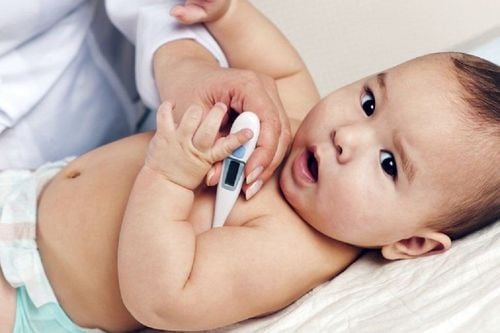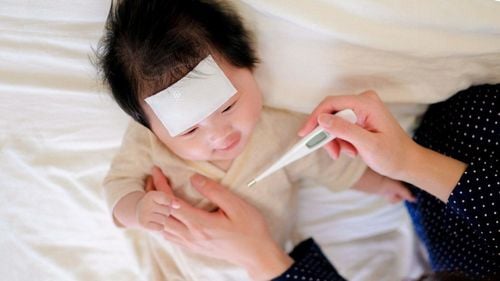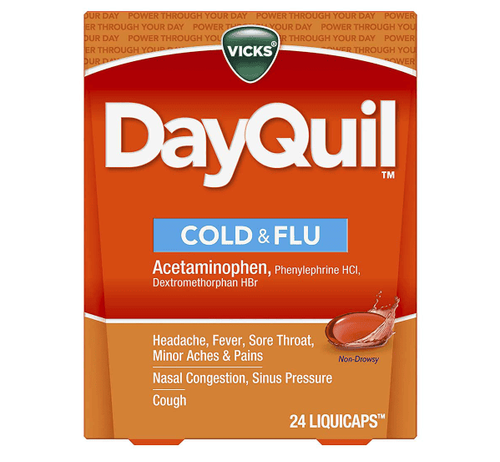This is an automatically translated article.
Fever is an increase in body temperature. It is usually a sign of an infection. Fever is generally harmless and can be helpful. Fever usually does not require treatment. The average body temperature is 98.6 F (37 C). But a normal body temperature can range from 97 F (36.1 C) to 99 F (37.2 C) or more. Your body temperature can change depending on your activity level or the time of day. Usually, the elderly have a lower body temperature than the young.
1. Treatment of fever in children
Children have relatively high fever when sick. Treatment of a fever depends on the degree of discomfort. If your child is uncomfortable or restless, these home care strategies can help:
Encourage your child to drink water Dress your child. Use a light blanket if your child feels chills, until the cold stops. Aspirin should not be given to children or adolescents. Do not give your infant any pain medication until you have contacted your doctor and your child has been evaluated. If your child is 6 months old or older, give them acetaminophen (Tylenol, others) or ibuprofen (Advil, Motrin, others). Read labels carefully for proper dosage. If your baby is under 3 months old and has a fever, it's important to get medical help right away. You need to take your child to a medical facility immediately for examination and treatment when:
The child is fussy, or acting unusual, does not improve even after taking medicine to lower the fever Signs and symptoms of dehydration , such as not having a wet diaper for 8 to 10 hours, crying without tears, dry mouth or refusing to drink any liquids Stiff neck or headache Abdominal pain Difficulty breathing Rash Joint pain or swelling.
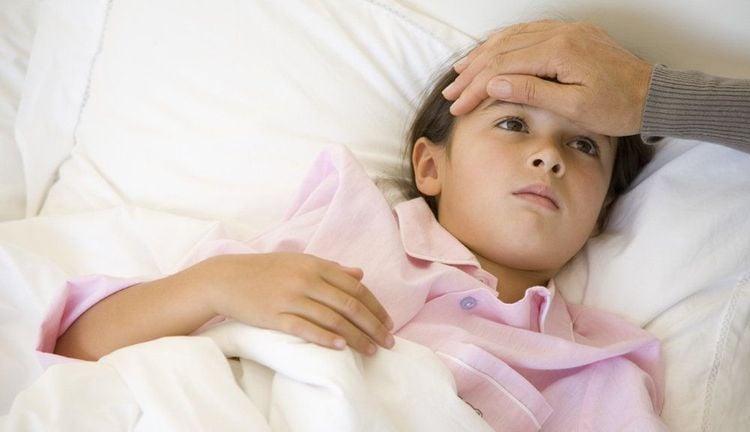
Cần đưa trẻ đến trung tâm y tế ngay nếu bị sốt kèm theo quấy khóc, khó thở, đau bụng
2. Treatment of fever in adults
Adults with a fever of 103 F (39.4 degrees C) or higher will usually observe symptoms of illness. The main goal of treatment is to relieve discomfort and help you rest.
To treat fever at home :
Drink plenty of water to stay hydrated. Wear light clothing. Use a light blanket if you feel chills, until the cold stops. Take acetaminophen (Tylenol, others) or ibuprofen (Advil, Motrin IB, others). Follow the instructions on the label. If you have a fever and the following symptoms are present, seek medical attention:
Shortness of breath Chest pain Severe headache Confusion or agitation Abdominal pain Repeated vomiting Dry mouth, decreased or dark urine, or refusal drink water, this may indicate dehydration Dermatitis Difficulty swallowing even when eating porridge or soup Pain when urinating or pain in the back. You need urgent medical attention in some situations such as your child being left in the car or being involved in some dangerous situation with some of the following symptoms:
Fever without sweat Severe headache Motion Stiff neck Confusion Repeated vomiting or diarrhea Significant discomfort or discomfort Any worrisome, different or unusual symptom.
3. How to measure body temperature
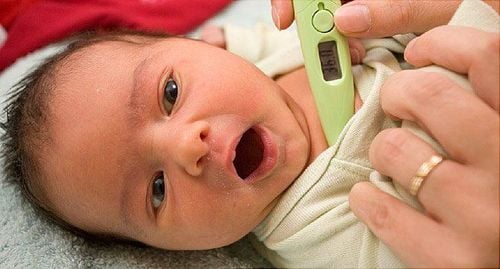
Sử dụng nhiệt kế kỹ thuật số để kiểm tra nhiệt độ
Always use a digital thermometer to check someone's temperature. Various types are available such as:
Rectal thermometers are used in the rectum. Oral thermometers are used in the mouth. The temporal artery thermometer uses an infrared scanner to measure the temperature of the temporal artery in the forehead. Axillary (axillary) and ear (tympanic) thermometers, are less accurate. Due to the potential for mercury exposure or ingestion, mercury thermometers have been phased out and are no longer recommended.
No matter what type of thermometer you use, take precautions when using it:
Read the instructions that came with the thermometer. Clean the thermometer before and after each use with alcohol or soap and warm water. Do not use the same thermometer for both oral and rectal temperatures. Get two and where the label is used. Never leave a child unattended while taking his or her temperature. Rectal temperature (for babies):
Turn on the digital thermometer and dip petroleum jelly or other lubricant in the tip of the thermometer. Place your baby on his or her stomach or side with knees bent. Carefully insert the tip 1/2 to 1 inch (1.3 to 2.5 cm) into the rectum. Hold the thermometer and the child still until the thermometer beeps indicate it is done. To avoid injury, do not let go of the thermometer while it is in the child. Remove the thermometer and read the number. Oral temperature:
Turn on the digital thermometer. Place the tip of the thermometer under the tongue. Close the mouth around the thermometer for the recommended amount of time or until the thermometer beeps indicate done. Remove the thermometer and read the number. Temporal artery temperature:
Turn on the digital thermometer. Gently sweep it over your forehead and read the number. Armpit temperature:
Turn on the digital thermometer. Place the thermometer under your armpit, making sure it's touching your skin, not your clothing. Hold the thermometer firmly until you hear the thermometer beep indicating it's done. Remove the thermometer and read the number. Ear temperature:
Turn on the digital thermometer. Gently place it in the ear canal not more than indicated by the instructions that came with the device. Hold the thermometer firmly until you hear the thermometer beep indicating it's done. Remove the thermometer and read the number. In case of high fever convulsions or fever for a long time does not go away, it is necessary to take the patient to a reputable medical facility for examination.
Please dial HOTLINE for more information or register for an appointment HERE. Download MyVinmec app to make appointments faster and to manage your bookings easily.
Reference source: Mayoclinic.org



